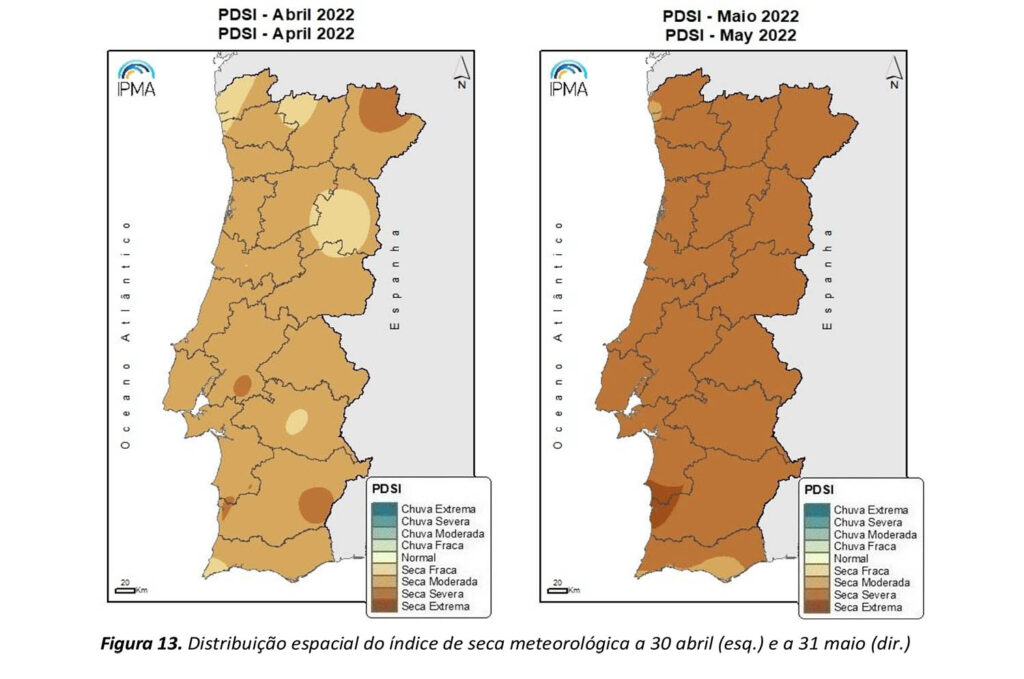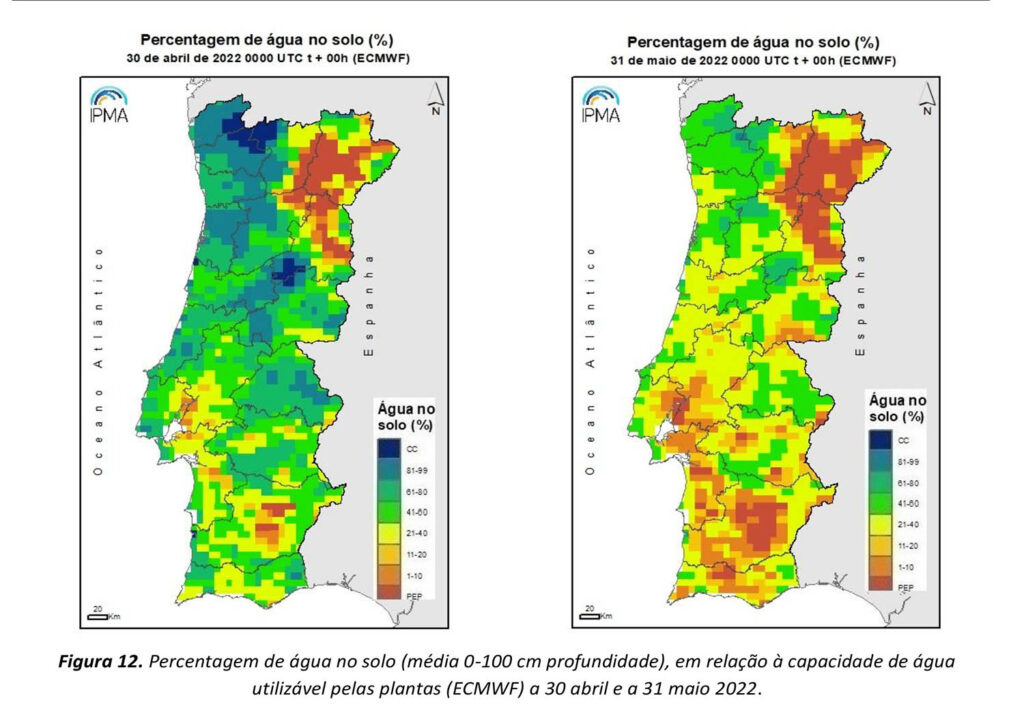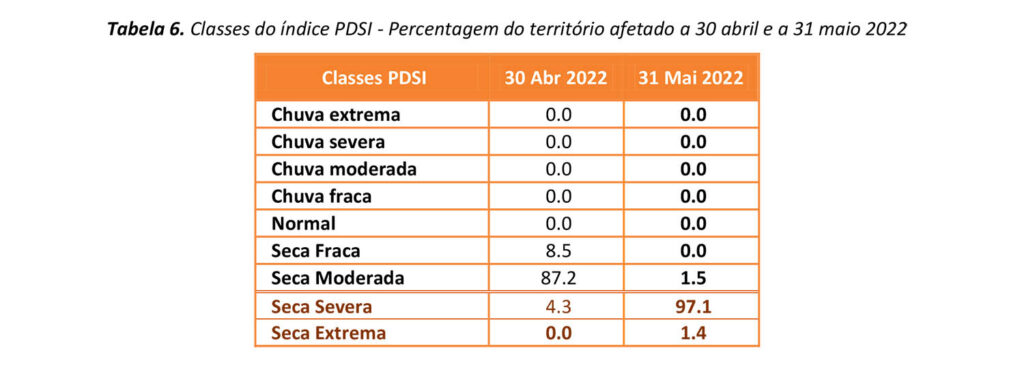97,1% of mainland Portugal is now in severe drought, according to the Portuguese Institute of the Sea and Atmosphere (IPMA). O heat in May and lack of rain led to a worsening of the meteorological drought throughout the territory, «with a very significant increase in the area in severe drought».
Thus, while, in April, most of the Algarve and Alentejo were in a situation of moderate drought, in May, the issue worsened and now it is the areas in severe drought that prevail, with an area of the Alentejo coast (covering the municipalities of Odemira, Sines, Santiago do Cacém and Grândola) in extreme drought (see figure above).
According to last month's Climate Bulletin, which the Sul Informação had access, «the average value of the amount of precipitation in May, 8.9 mm, was much lower than the normal value 1971-2000, corresponding to only 13%» of that normal.
The IPMA adds that “in terms of the amount of precipitation in the current hydrological year 2021/2022 (from 1 October 2021 to 31 May 2022), the value is 393.9 mm and corresponds to 50% of the normal value, with the 2nd value being lowest since 1931'.
At the end of May, there was even a significant decrease in the percentage of water in the soil throughout the territory, with emphasis on the North and Centre, Vale do Tejo, Alentejo and Algarve, where percentage values of water in the soil less than 20%.
The IPMA adds that “according to the PDSI3 index, the meteorological drought situation has worsened throughout the territory, with a very significant increase in the area in severe drought, with a large part of the territory now in this class”.
Thus, the percentage distribution by classes of the PDSI index in the territory is as follows: 1.5% is in moderate drought, 97.1% in severe drought and 1.4% in extreme drought.
The PDSI index is based on the concept of the water balance, taking into account data on the amount of precipitation, air temperature and available water capacity in the soil, allowing the detection of the occurrence of drought periods and classifying them in terms of intensity ( weak, moderate, severe and extreme).






















Comments